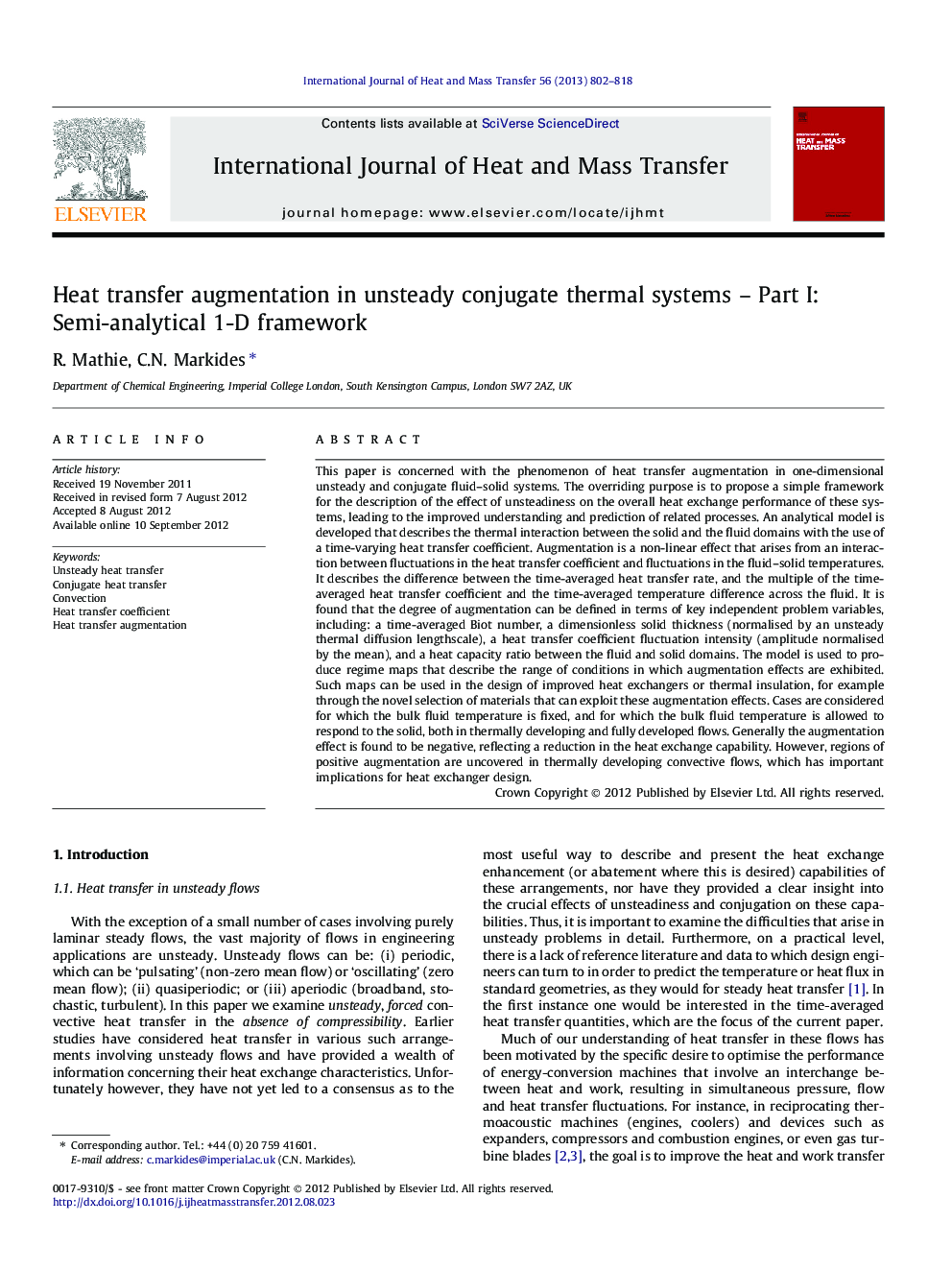| Article ID | Journal | Published Year | Pages | File Type |
|---|---|---|---|---|
| 658831 | International Journal of Heat and Mass Transfer | 2013 | 17 Pages |
Abstract
This paper is concerned with the phenomenon of heat transfer augmentation in one-dimensional unsteady and conjugate fluid-solid systems. The overriding purpose is to propose a simple framework for the description of the effect of unsteadiness on the overall heat exchange performance of these systems, leading to the improved understanding and prediction of related processes. An analytical model is developed that describes the thermal interaction between the solid and the fluid domains with the use of a time-varying heat transfer coefficient. Augmentation is a non-linear effect that arises from an interaction between fluctuations in the heat transfer coefficient and fluctuations in the fluid-solid temperatures. It describes the difference between the time-averaged heat transfer rate, and the multiple of the time-averaged heat transfer coefficient and the time-averaged temperature difference across the fluid. It is found that the degree of augmentation can be defined in terms of key independent problem variables, including: a time-averaged Biot number, a dimensionless solid thickness (normalised by an unsteady thermal diffusion lengthscale), a heat transfer coefficient fluctuation intensity (amplitude normalised by the mean), and a heat capacity ratio between the fluid and solid domains. The model is used to produce regime maps that describe the range of conditions in which augmentation effects are exhibited. Such maps can be used in the design of improved heat exchangers or thermal insulation, for example through the novel selection of materials that can exploit these augmentation effects. Cases are considered for which the bulk fluid temperature is fixed, and for which the bulk fluid temperature is allowed to respond to the solid, both in thermally developing and fully developed flows. Generally the augmentation effect is found to be negative, reflecting a reduction in the heat exchange capability. However, regions of positive augmentation are uncovered in thermally developing convective flows, which has important implications for heat exchanger design.
Keywords
Related Topics
Physical Sciences and Engineering
Chemical Engineering
Fluid Flow and Transfer Processes
Authors
R. Mathie, C.N. Markides,
